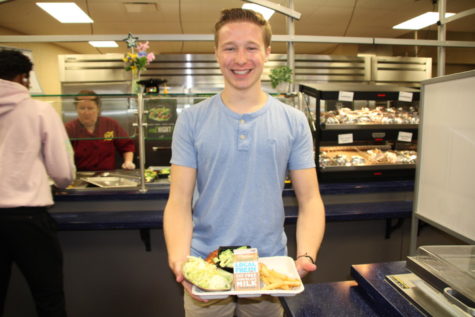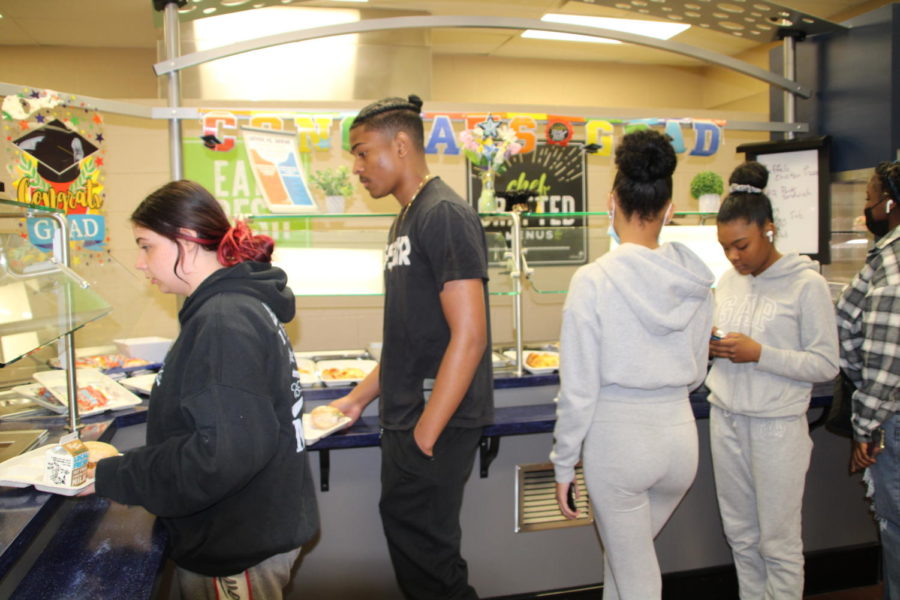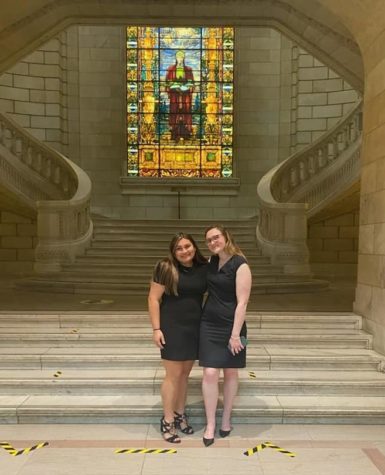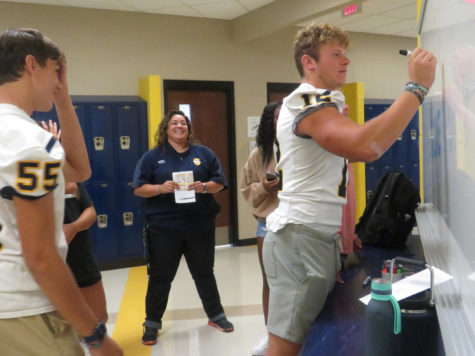Lunch selections affected by pandemic, shortages, government guidelines
Salad bar in works for next year
Students make their selections in the lunch line.
Lunches at SHS have not exactly been what the Rocket kitchen staff was hoping for. And frankly, the students are not too happy with it either. Eating pizza everyday is not exactly what students want when it comes to lunches.
Covid has greatly impacted the process of ordering food for lunches and getting what everyone would like to get. Covid has not only delayed the shipment of items, but also prevented them from getting the food they want. Though Covid has largely affected much of the food service program, there are big plans for next year.
The plan for next year, as of now, is to have a fully self-serve lunch line and salad bar. This will give time for the kitchen staff to prepare food for the following lunches while students are grabbing their food. They plan to have more variety and better quality food for next year and are hoping to have much more student satisfaction.
One thing that cannot change, unfortunately, is some of the guidelines the government has in place for school lunches. When talking with Heath Urbaniak, Streetsboro High School’s food service director, he brought up former first lady Michelle Obama.
Michelle Obama did a lot of work to get “healthier lunches” while she was first lady, and while this was done with good intentions, it is the reason why school food is reduced fat/fat free, Urbaniak said.
But these types of food aren’t good for people, he added Obama has fought for several rules to be implemented in school lunches, such as no soda or sugary drinks, restrictions on sodium, sugar, and fat content, and minimum requirements for fruits, vegetables, and whole grains.
According to an article by healthline, “Low fat foods may seem healthy, but they’re often loaded with added sugar and other unhealthy ingredients. These can lead to excessive hunger, weight gain, and disease.”
So this defeats the whole purpose of what was trying to be done with the change in school lunches. Most people see the statistic that one in three kids who get school lunch are obese, and think the lunches are the problem, but this has nothing to do with the lunches themselves.

“Since I handle all of the free and reduced data for the school district, I know that students who participate in each meal program, each day, are typically economically disadvantaged.” Urbaniak said, “Imagine walking through a grocery store with an EBT card [a card that allows people to buy food for free and reimburses the store] trying to budget the small amount of money you have to stretch a whole month. Unhealthy, processed, and sugary foods are usually the cheapest things available, and they are also calorie dense foods.”
The other issue is availability of products in mass quantities.
Andreas Johansson, the district’s director of operations explained that when restaurants run out of something, they can simply run to the store to get more, but when the school runs out of food, the kitchen staff has to come up with something quick because no store has enough food to provide lunch for 300 kids.
SHS’ lunch plans for next year have the kitchen staff excited and they think the students should be too.
“We’re excited to continue to improve and expand our food services offerings for the fall; fresh fruit and veggie offerings, salad bar, and more,” Johannson said. “We’re also looking for input from students and staff on menu items. Look for those opportunities in the early fall.”
Your donation will support the student journalists of Streetsboro High School. Your contribution will allow us to purchase equipment and cover our annual website hosting costs.







